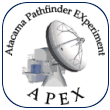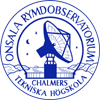APEX-1 (230 GHz) Calibration Plan
On these pages we present the results and analysis of the APEX-1 calibration plan observations.
Intensity calibration stability
By observing strong (non-masing) spectral lines in several sources over the whole frequency range accessible by our receivers, we provide a intensity reference for scientific observations. These measurements are performed in regular intervals, at least once per observing block. This way we are able to monitor the calibration stability as a function of time and frequency.
- Overview of sources and lines
This page lists all source-line combinations which are observed regularly, and shows a representative spectrum for each combination. Further it provides links to a monitoring page for each combination. - Monitoring of normalized parameters
Here we present normalized, i.e. source-independent data, in order to better detect time-variations of the measured parameters for the various frequencies. - Sideband response
Most of the frequency range of the APEX-1 receiver can be tuned in LSB or USB tuning. Ideally, both tunings should give identical results. We monitor the line ratios USB/LSB for some lines over the band, to detect problems with the receiver or the calibrator software.
Frequency stability
For narrow-line sources the regular observations can also be used to determine the centre velocity and line width of selected spectral lines. In this way we are able to monitor the stability of our complete LO system, from Doppler shift calculation to backend properties. Through the line-width monitoring we can detect any extra broadening, e.g. because of LO frequency fluctuations.
For the source WB947 we monitor the 12CO(2-1) line (in USB and LSB) For each date the peak velocity and line width are estimated by a Gaussian fit.
- WB947 monitoring pages: 12CO(2-1) - LSB 12CO(2-1) - USB




